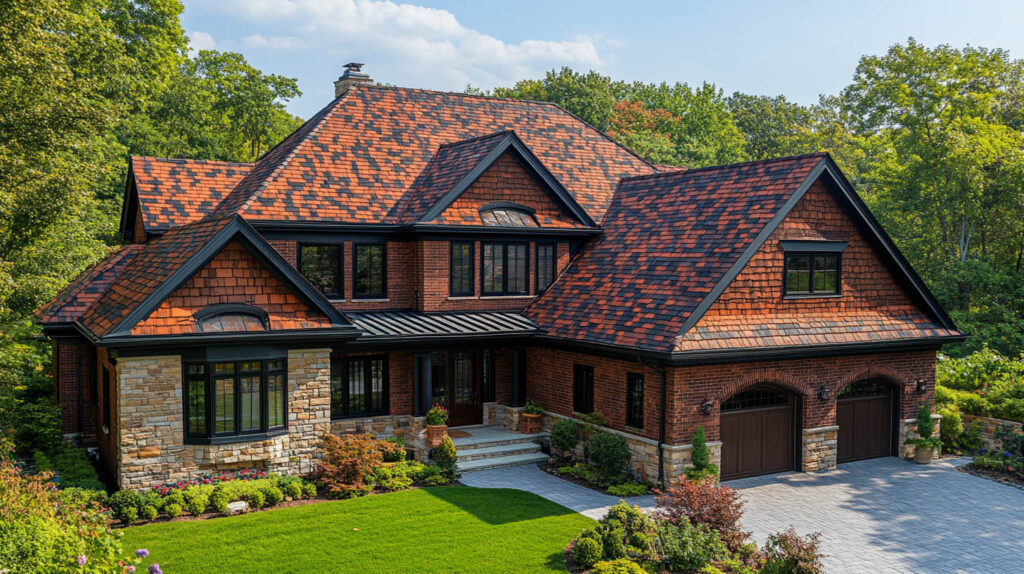
Blog
Which Roof Colors Help Keep Your Home Cooler?
Choosing the right roof color can significantly impact the temperature inside your home, especially during hot summer months. While aesthetics are often the main focus when selecting a roof color, it’s important to recognize that the color you choose can also play a role in your home’s energy efficiency. At Avenue Roofing, we understand the importance of balancing both style and functionality when making roofing decisions.

Light vs. Dark Roof Colors: How Do They Affect Heat?
The basic principle behind selecting a roof color that helps keep your home cooler is understanding how light and dark colors absorb and reflect heat. Light-colored roofs, such as white or light gray, tend to reflect more sunlight, reducing the amount of heat absorbed by the roof. On the other hand, dark-colored roofs, like black or dark brown, absorb more heat, which can make your home warmer.
Interesting Fact: Studies have shown that light-colored roofs can reflect up to 80% of the sun’s rays, significantly lowering indoor temperatures and reducing energy costs for air conditioning.
Factors Beyond Color That Affect Roof Performance
While roof color is a key factor, it’s not the only one that influences how cool your home stays. Other considerations, such as insulation, ventilation, and roofing material, also play important roles in heat regulation.
Insulation
A well-insulated roof can trap cool air inside your home and reduce the need for excessive air conditioning. Proper insulation works hand in hand with a reflective roof to maintain a comfortable indoor temperature.
Ventilation
Proper attic ventilation is crucial for keeping your home cool. A ventilated roof allows hot air to escape, preventing it from being trapped in your home. This airflow helps maintain cooler indoor temperatures, regardless of roof color.
Did You Know? Installing a ridge vent or other forms of attic ventilation can reduce roof temperatures by up to 50°F, significantly enhancing your home’s cooling efficiency.
Roof Material
Certain roofing materials are more reflective than others. Metal roofs, for example, are excellent at reflecting sunlight, making them an energy-efficient option. Asphalt shingles, while common, absorb more heat than metal but are available in lighter colors to help mitigate this.
Choosing the Right Roof Color: A Balance Between Aesthetics and Function
While it’s tempting to choose a dark roof for its visual appeal, especially if it complements your home’s exterior, lighter colors offer the advantage of reducing heat absorption. However, with advances in roofing technology, darker colors can now be engineered to reflect more light than they once did. Consult with roofing experts, like Avenue Roofing, to discuss how to strike the right balance between aesthetics and energy efficiency.
Conclusion: Stay Cool with the Right Roof
Selecting a roof color that keeps your home cooler requires careful consideration of not just aesthetics but also the practical benefits of heat reflection. Light-colored roofs are typically the best option for maximizing energy efficiency and reducing cooling costs. However, other factors, such as insulation and ventilation, also contribute to your home’s overall temperature regulation. For expert guidance on roof colors and materials, contact Avenue Roofing to ensure your roof is both stylish and functional.
FAQs:
1. Does roof color really affect indoor temperature? Yes, lighter roof colors reflect more sunlight, keeping your home cooler, while darker colors absorb heat, making the house warmer.
2. Can I choose a dark roof color without compromising energy efficiency? Yes, with new technology, even dark roof colors can be treated to reflect more light, improving their energy efficiency.
3. What type of roof material is best for keeping my home cool? Metal roofing is known for its reflective properties, making it a great choice for reducing heat absorption.
4. Will adding insulation help if my roof color is dark? Yes, proper insulation can significantly reduce the heat that enters your home, regardless of the roof color.
5. How often should I check my roof’s ventilation? It’s recommended to check your roof’s ventilation at least twice a year, especially before and after extreme weather conditions.
To discover which roofing material is the most durable for your home, click here.



